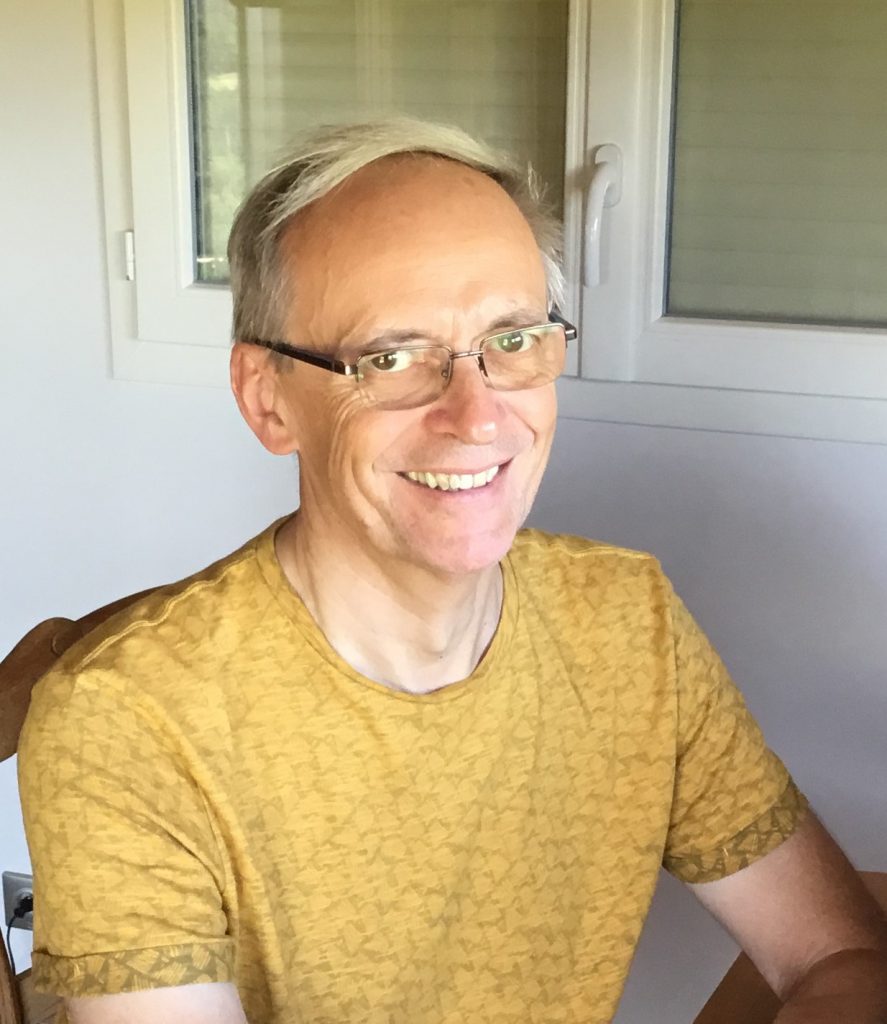Researcher’s portrait – ISITE-BFC fellowships

Guy Millot, UBFC Senior fellowship laureate
Guy Millot, physicist, has made many pioneering contributions in the field of nonlinear optical physics, including laser spectroscopy and ultrafast guided optics. His many scientific breakthroughs and numerous publications in highly recognized journals (such as Nature Photonics, Advances in Optics and Photonics, Light: Science and Applications and Communication Physics) have earned him international recognition: he is considered one of the world’s leading experts in multiple fields such as optical solitons and self-similar pulses, incoherent and multimode nonlinear optics and double-comb spectroscopy. The quality of his research has been rewarded by two prestigious prizes: membership of the Institut Universitaire de France (IUF) and the CNRS silver medal. He was elected Fellow of the Optical Society of America in 2012 and very recently, Fellow of the European Optical Society for 2019/2020.
1. On the second ISITE-BFC call for project, you applied for a UBFC Senior Fellowship. Could you please give us the main motives of your application?
My application was driven by two main motivations.
Firstly, the desire to pursue an exciting research project. In 2014, I initiated a new research activity on an innovative method of electro-optical frequency comb spectroscopy (EO-DCS) and we quickly acquired an international reputation on the subject, which is today experiencing very strong growth in international research. An evaluation of the potential for exploitation of the EO-DCS spectrometer has revealed a very strong interest from manufacturers of scientific, monitoring and analytical instruments as well as environmental and medical-biomedical analysis laboratories (particularly regarding its application in the mid-infrared range). As an example of application, the mid-infrared spectrometer we have developed has provided very encouraging initial results of measurements of the 13C/12C isotope ratio in carbon dioxide for the analysis of exhaled air. Exhaled air contains many volatile organic compounds (VOCs) that allow the early identification of certain severe diseases (diabetes, Parkinson’s, peptic ulcers, cancers). Thus, the detection of these components by non-invasive methods is a major societal challenge for the years to come. Other applications are possible, such as outdoor gas analysis (environment), chemical gas detection, non-linear imaging (stimulated Raman microscopy, CARS), early diagnosis of plant stress, real-time analysis of automobile exhaust gases and combustion or the development of ultra-precise optical frequency synthesizers. However, the maturity of the EO-DCS spectrometer, although perfectly adapted to on-board use, was nevertheless considered insufficient until now to arouse their immediate interest. The objective of our research project is therefore to design a functional and handheld spectrometer, for non-experts, in order to foster interdisciplinarity at a high international level.
Other motivations for this candidature, the European Research Council (ERC) and the Institut Universitaire de France (IUF). The idea of applying for an ERC contract had been on my mind for several years already. Despite the quality of the research carried out in many fields, there are very few ERC laureates in Bourgogne – Franche-Comté. One of the reasons for this may be related to the insufficient assistance given to researchers and teacher-researchers to put together applications for which the slightest misinformation or presentation can be detrimental. While administrative and financial support exists and is appreciated, the lack of a more global strategy to identify and assist the most promising research topics and researchers most likely to win ERC contracts is lacking. The UBFC senior fellowship program seemed to me to be an adequate response to this deficiency, while also being in line with the objectives of the Institut Universitaire de France (IUF) to encourage and stimulate applications to the ERC. One of my objectives was also to apply to the IUF.
2. What are the assets of your project in view of the ERC grant?
The main asset of this project towards the ERC is to propose high-level multidisciplinary fundamental research with valorisation perspectives and important societal benefits. This is demonstrated by its targeted application for the real-time analysis of exhaled air, which is an example of high societal stakes.
This project is furthermore based on preliminary results obtained in collaboration with Professor Theodor Hänsch – winner of the Nobel Prize in Physics in 2005 for his work on frequency combs. This also demonstrates, at the highest level, its relevance and quality.
The application of frequency combs to real-time spectroscopy in the mid-infrared range is a hot topic internationally. The demand is currently partially fulfilled by the classical FTIR (Fourier Transform Infrared Spectroscopy) technique, but double-comb spectroscopy is much more accurate, faster, and could be cheaper and more widely available. Industrial market opportunities can be enormous.
In addition, my team is very well adapted to the project and has all the skills needed to achieve it (chemistry, experimental and theoretical physics, photonics engineering and medicine) and my dual competence in molecular physics and spectroscopy and in nonlinear photonics is a guarantee of success for my project.
3. In your opinion, what would be the main strengths of the I-SITE project run by UBFC?
Its main strength lies in the implementation of a very high level of international expertise, the results of which cannot be contested. Moreover, the feedback of expertise is very interesting to improve his project.
I would add that application files formatted in the ERC style are a good training for submitting a project to the ERC.
In addition, the level of funding is very interesting (the spending modalities could however be improved).
All in all, the ISITE-BFC program is a magnificent tool for the enhancement and promotion of research excellence in our region: everything must be done to preserve and further develop it!
Member of the IUF since 2019, Guy Millot, teacher-researcher at the Photonics Department of the Laboratory Interdisciplinaire Carnot de Bourgogne (ICB), obtains a new distinction and becomes a Fellow of the European Optical Society 2019-2020.
More information :
